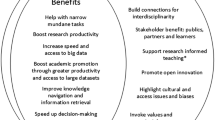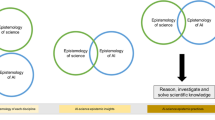Abstract
In this era of interdisciplinary science, many scientific achievements, such as artificial intelligence (AI), have brought dramatic revolutions to human society. The increasing availability of digital data on scholarly outputs offers unprecedented opportunities to explore science of science (SciSci). Despite many significant works have been done on SciSci, substantial disciplinary differences in different domains make some insights inadequate within particular fields. One thing standing out is that knowledge concerning the science behind AI is sorely lacking. In this work, we study the evolution of AI from three dimensions, including the evolution of trend, mobility, and collaboration. We find that the AI research hotspots have shifted from theory to application. The USA, which has the largest number of distinguished AI scientists, appeals most to the global AI talents. The brain drain problem of AI scientists is increasingly serious in developing countries. The ties among the AI elites are highly clustered in the collaboration network. Overall, our work aims to serve as a starter and support the development of AI exploring in a visionary way. The related demos are available online in AMiner (https://www.aminer.cn/ai10, https://trend.aminer.org).

















Similar content being viewed by others
References
Acuna, D. E., Allesina, S., & Kording, K. P. (2012). Future impact: Predicting scientific success. Nature, 489(7415), 201.
Barabási, A. L., Song, C., & Wang, D. (2012). Publishing: Handful of papers dominates citation. Nature, 491(7422), 40.
Bromham, L., Dinnage, R., & Hua, X. (2016). Interdisciplinary research has consistently lower funding success. Nature, 534(7609), 684.
Cimini, G., Zaccaria, A., & Gabrielli, A. (2016). Investigating the interplay between fundamentals of national research systems: Performance, investments and international collaborations. Journal of Informetrics, 10(1), 200–211.
Deville, P., Wang, D., Sinatra, R., Song, C., Blondel, V. D., & Barabási, A. L. (2014). Career on the move: Geography, stratification, and scientific impact. Scientific Reports, 4, 4770.
Dong, Y., Johnson, R. A., & Chawla, N. V. (2015). Will this paper increase your h-index?: Scientific impact prediction. In Proceedings of the eighth ACM international conference on web search and data mining (pp. 149–158). ACM.
Dong, Y., Ma, H., Shen, Z., & Wang, K. (2017). A century of science: Globalization of scientific collaborations, citations, and innovations. In Proceedings of the 23rd ACM SIGKDD international conference on knowledge discovery and data mining (pp. 1437–1446). ACM.
Fortunato, S., Bergstrom, C. T., Börner, K., Evans, J. A., Helbing, D., Milojević, S., et al. (2018). Science of science. Science, 359, 6379.
Garfield, E. (2001). Impact factors, and why they won’t go away. Nature, 411(6837), 522.
Hirsch, J. E. (2005). An index to quantify an individual’s scientific research output. Proceedings of the National Academy of Sciences, 102(46), 16569–16572.
Hunter, D., Smyth, P., Vu, D. Q., & Asuncion, A. U. (2011). Dynamic egocentric models for citation networks. In Proceedings of the 28th international conference on machine learning (ICML-11) (pp. 857–864).
Jia, T., Wang, D., & Szymanski, B. K. (2017). Quantifying patterns of research-interest evolution. Nature Human Behaviour, 1(4), 0078.
Kuhn, T., Perc, M., & Helbing, D. (2014). Inheritance patterns in citation networks reveal scientific memes. Physical Review X, 4(4), 041036.
Larivière, V., Haustein, S., & Börner, K. (2015). Long-distance interdisciplinarity leads to higher scientific impact. Plos One, 10(3), e0122565.
Ma, Y., & Uzzi, B. (2018). Scientific prize network predicts who pushes the boundaries of science. Proceedings of the National Academy of Sciences, 115(50), 12608–12615.
Margolis, J. (1967). Citation indexing and evaluation of scientific papers. Science, 155(3767), 1213–1219.
Newman, M. E. (2001). The structure of scientific collaboration networks. Proceedings of the National Academy of Sciences, 98(2), 404–409.
Pan, R. K., Kaski, K., & Fortunato, S. (2012). World citation and collaboration networks: Uncovering the role of geography in science. Scientific Reports, 2, 902.
Radicchi, F., Fortunato, S., & Castellano, C. (2008). Universality of citation distributions: Toward an objective measure of scientific impact. Proceedings of the National Academy of Sciences, 105(45), 17268–17272.
Sekercioglu, C. H. (2008). Quantifying coauthor contributions. Science, 322(5900), 371–371.
Shao, Z., Tang, J., Zhang, Y., Gao, B., & Wang, Y. (2018). Scholar trajectory: Visualizing the migration of talents.
Shen, H. W., Wang, D., Song, C., & Barabási, A. L. (2014). Modeling and predicting popularity dynamics via reinforced poisson processes. AAAI, 14, 291–297.
Sinatra, R., Deville, P., Szell, M., Wang, D., & Barabási, A. L. (2015). A century of physics. Nature Physics, 11(10), 791.
Sinha, A., Shen, Z., Song, Y., Ma, H., Eide, D., Hsu, B. J. P., & Wang, K. (2015). An overview of microsoft academic service (mas) and applications. In Proceedings of the 24th international conference on world wide web (pp. 243–246). ACM.
Sugimoto, C. R., Robinson-García, N., Murray, D. S., Yegros-Yegros, A., Costas, R., & Larivière, V. (2017). Scientists have most impact when they’re free to move. Nature News, 550(7674), 29.
Sun, X., Kaur, J., Milojević, S., Flammini, A., & Menczer, F. (2013). Social dynamics of science. Scientific Reports, 3, 1069.
Tang, J., Wu, S., Sun, J., & Su, H. (2012). Cross-domain collaboration recommendation. In Proceedings of the 18th ACM SIGKDD international conference on Knowledge discovery and data mining (pp. 1285–1293). ACM.
Tang, J., Zhang, J., Yao, L., Li, J., Zhang, L., & Su, Z. (2008). Arnetminer: Extraction and mining of academic social networks. In Proceedings of the 14th ACM SIGKDD international conference on Knowledge discovery and data mining (pp. 990–998). ACM.
Van Noorden, R. (2012). Global mobility: Science on the move. Nature News, 490(7420), 326.
Van Noorden, R. (2014). Google scholar pioneer on search engine’s future. London: Nature News.
Wagner, C. S., Roessner, J. D., Bobb, K., Klein, J. T., Boyack, K. W., Keyton, J., et al. (2011). Approaches to understanding and measuring interdisciplinary scientific research (IDR): A review of the literature. Journal of Informetrics, 5(1), 14–26.
Wang, D., Song, C., & Barabási, A. L. (2013). Quantifying long-term scientific impact. Science, 342(6154), 127–132.
Yegros-Yegros, A., Rafols, I., & Deste, P. (2015). Does interdisciplinary research lead to higher citation impact? The different effect of proximal and distal interdisciplinarity. PloS One, 10(8), e0135095.
Acknowledgements
The work is supported by the National Natural Science Foundation of China (NSFC) under Grant No. 61806111, No. 61806109 and NSFC for Distinguished Young Scholar under Grant No. 61825602.
Author information
Authors and Affiliations
Corresponding author
Additional information
Sha Yuan and Zhou Shao are co-first authors.
Rights and permissions
About this article
Cite this article
Yuan, S., Shao, Z., Wei, X. et al. Science behind AI: the evolution of trend, mobility, and collaboration. Scientometrics 124, 993–1013 (2020). https://doi.org/10.1007/s11192-020-03423-7
Received:
Published:
Issue Date:
DOI: https://doi.org/10.1007/s11192-020-03423-7




